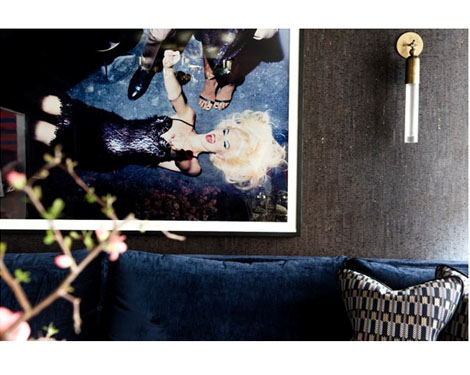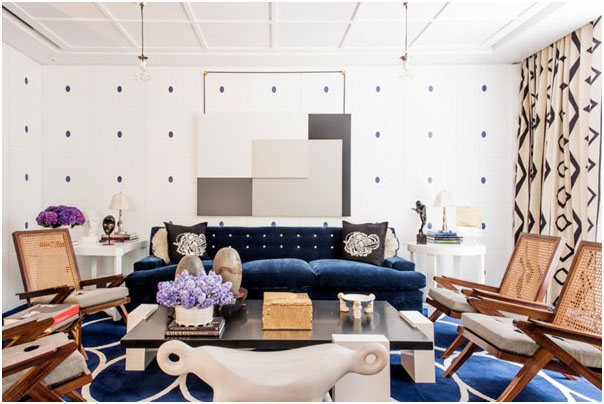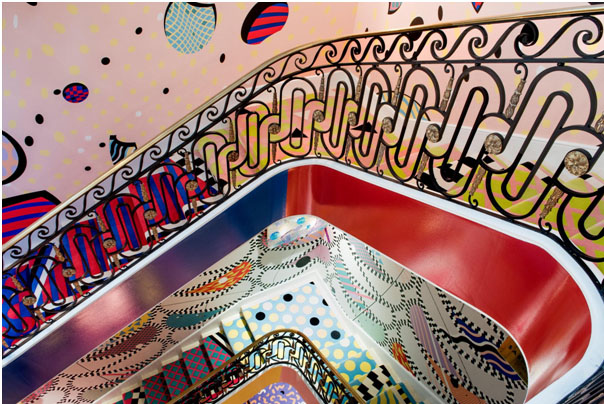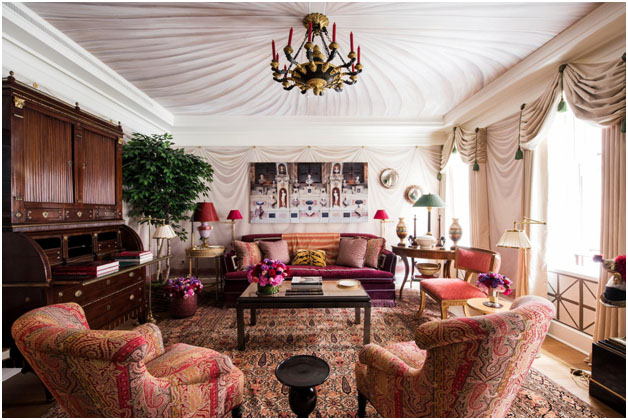The reactionary and radical ’80s are being celebrated at an Upper East Side institution, the Kips Bay Decorator Show House.

It’s spring! (Sort of.) A more reliable sign than the balky weather is the Kips Bay Decorator Show House, opening Tuesday in an Upper East Side brownstone. Now in its 46th year, the show house is always a spectacle, a three-dimensional tour into the lives of the 1 percent. (The townhouse is for sale for $51 million.) This year, 22 designers are spread out over seven levels and about 15,000 square feet.

One of the more ravishing spaces is in the basement, where Juan Montoya built an entire living room — from the paneling to the ceiling — from scratch. The designer said he was inspired by “cosmic forces.” In his living room, one floor up, David Netto recalled the Manhattan of his youth. Now 48, Mr. Netto was a teenager during the heyday of Kips Bay, when Mario Buatta, the so-called Prince of Chintz, and Mark Hampton, the scholarly traditionalist, squared off like gladiators in show house after show house, alongside Albert Hadley or Joe D’Urso or John Saladino, designers whose flourishes were more modern. Manhattan in those days was a tale of two cities, both of which were radical in their own fashion.
"There was the downtown, music-driven club world," Mr. Netto said, "and the uptown, neo-Gilded Age, neo-Rothschild fantasy" that was erupting along Park Avenue, where Mr. Buatta and Mr. Hampton were creating blood red habitats with acres of damask and armies of old masters for their robber baron clients. Park Avenue wives would shop at Kips Bay, swooping in to buy entire rooms — from pelmet to pilaster — and you might find yourself, as Mr. Netto once did, meeting exiles from earlier eras, like Slim Keith, one of Truman Capote’s swans. “Lady Keith, Mario called her,” Mr. Netto said, meaning Mr. Buatta.
Mr. Netto’s father owned Cowtan & Tout, the fabric house, and Kips Bay was family business. “It cemented my taste,” said Mr. Netto, whose very modern living room comes with some pointed ’80s references, like tobacco-colored lacquer walls.

What Else Will I See?
In the stairwell, Sasha Bikoff presents a tutorial in Memphis design. On the roof, Charles Pavarini’s post-consumer-plastic fake turf chairs are, quite literally, lawn furniture, and very comfy. In a tiny black-and-bronze bathroom by Scott Sanders, there’s a pair of Goya engravings, a Harry Benson photograph of the Beatles and handmade wallpaper that looks like Moroccan leather. There are red stenciled borders in Katie Ridder’s blush-colored guest bedroom and a lovely wallpaper in the front hall, by Michael Herold, inspired by Poussin landscapes

Alexa Hampton made an enticing tented room with touches of rose and an abundance of neo-classical references. (Like Mr. Netto, Ms. Hampton grew up in Kips Bay show houses, and she remembers when her father, Mark Hampton, took her second grade class to see one of his rooms at Kips Bay. “He had done a magnificent black-brown room and I was very proud of him,” she said. “I strutted like a peacock in my class for weeks afterwards.”)
“The Afterparty” is what B.A. Torrey called his swanky midnight blue lounge. It connects to a wraparound bar, where you’ll find a piece by Kehinde Wiley, President Barack Obama’s portraitist.
A pair of fearsome warrior princesses in a paneled living room by Bunny Williams and Elizabeth Swartz feels culturally appropriate.
There are 26 pillows in 26 different fabrics and 36 pieces of art in this sitting room by Philip Mitchell. That’s Lee Radziwill over the sofa, in an early ’60s photograph by Mark Shaw called "Blue Cape in a Brocade Room."
There are lots and lots of bars, including one by Jamie Drake and Caleb Anderson that recalls the glittering corners of Studio 54, and another by Wesley Moon with a feathered mirror made by Bill Cunningham, the fashion and society photographer and a New York City institution



















Your Message